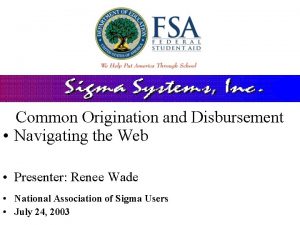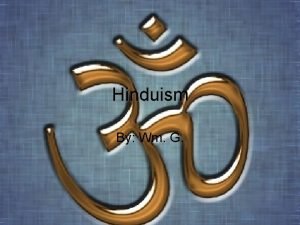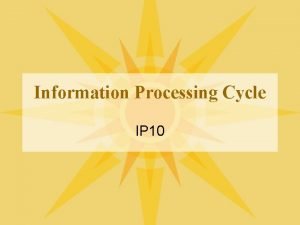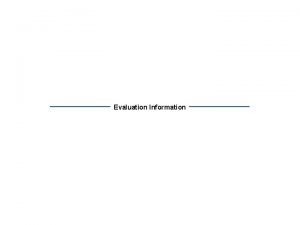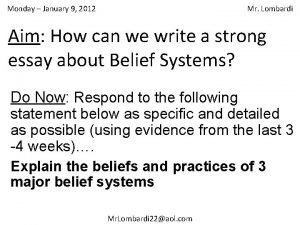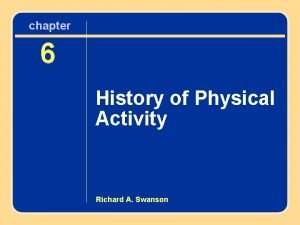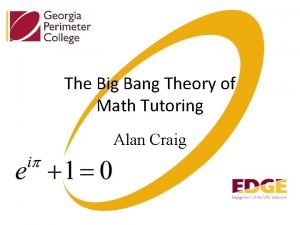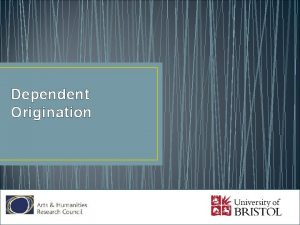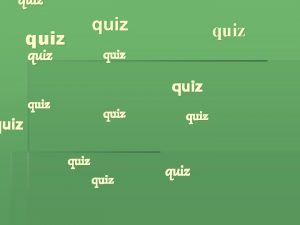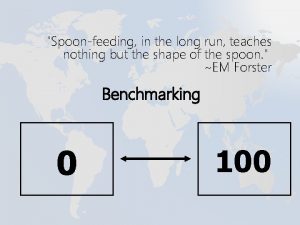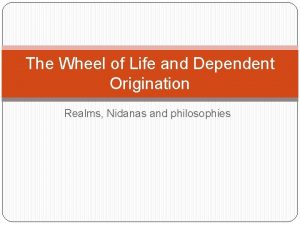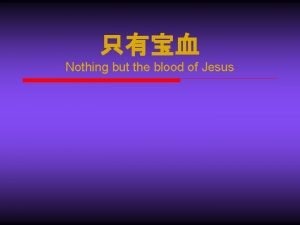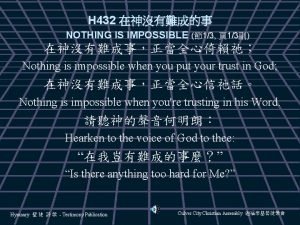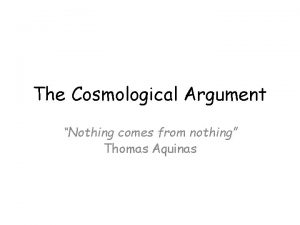Dependent Origination Quiz Dependent Origination teaches that nothing































- Slides: 31

Dependent Origination Quiz

Dependent Origination teaches that nothing can exist without being caused True False

Wrong! • Dependent Origination (pratītyasamutpadā/ paṭiccasmuppāda) is a Buddhist doctrine of causality. • This system of thought maintains that everything has been caused into existence. Nothing has been created ex nihilo. Next Question

Correct! • Dependent Origination (pratītyasamutpadā/ paṭiccasmuppāda) is a Buddhist doctrine of causality. • This system of thought maintains that everything has been caused into existence. Nothing has been created ex nihilo. Next Question

How does Dependent Origination show that Buddhist teachings are the Middle Way? A. It shows that there is no such thing as life or death B. It does not abide by nihilistic tenets nor does it endorse eternalism. C. It does not show that Buddhist teachings are the Middle Way

Wrong! • As everything has been caused to some condition it means that there is nothing eternal. Likewise it shows that thing do have an existence meaning that Buddhist doctrine is not nihilistic. It is evidence that Buddhism is the Middle Way between two extremes. Next Question

Correct! • As everything has been caused to some condition it means that there is nothing eternal. Likewise it shows that thing do have an existence meaning that Buddhist doctrine is not nihilistic. It is evidence that Buddhism is the Middle Way between two extremes. Next Question

Why is anātman important in Dependent Origination and rebirth? A. It shows that there is a soul that is passed from life to life B. It shows that there are no connected lives and no rebirth C. It show that rebirth is caused by karma not by a Self or soul

Wrong! • The teaching of anātman outlines that there is nothing that has a permanent Self, there is no underlying consciousness or sense of person that is carried from life to life. • When a person dies the reborn being is not the same as the deceased but at the same time is not completely different. • The two beings (A and B) are linked through a causal process. The now deceased A had performed karmic actions and these past actions are factors in the cause that created B. Next Question

Correct! • The teaching of anātman outlines that there is nothing that has a permanent Self, there is no underlying consciousness or sense of person that is carried from life to life. • When a person dies the reborn being is not the same as the deceased but at the same time is not completely different. • The two beings (A and B) are linked through a causal process. The now deceased A had performed karmic actions and these past actions are factors in the cause that created B. Next Question

How many links are there in the Buddha’s formula for Dependent Origination? A. 10 B. 12 C. 14

Wrong! • There is a twelvefold formula for Dependent Origination which can be used to explain rebirth: “conditioned by ignorance are formations, conditioned by formations is consciousness, conditioned by consciousness is mind-and-body, conditioned by mind-and-body are the six senses, conditioned by the six-senses is sense contact, conditioned by sense contact is feeling, conditioned by feeling is craving, conditioned by craving is attachment, conditioned by attachment is becoming, conditioned by becoming is birth, conditioned by birth is old age and death” Saṃyutta Nikāya II 2 Translation from Rupert Gethin, Foundations of Buddhism (Oxford: Oxford University Press, 1998), pp 141 -142 Next Question

Correct • There is a twelvefold formula for Dependent Origination which can be used to explain rebirth: “conditioned by ignorance are formations, conditioned by formations is consciousness, conditioned by consciousness is mind-and-body, conditioned by mind-and-body are the six senses, conditioned by the six-senses is sense contact, conditioned by sense contact is feeling, conditioned by feeling is craving, conditioned by craving is attachment, conditioned by attachment is becoming, conditioned by becoming is birth, conditioned by birth is old age and death” Saṃyutta Nikāya II 2 Translation from Rupert Gethin, Foundations of Buddhism (Oxford: Oxford University Press, 1998), pp 141 -142 Next Question

The Twelvefold formula for Dependent Origination is used to explain rebirth. What else can it describe? A. Mental Processes B. Digestion C. Three lifetimes

Wrong! • The twelvefold formula of dependent origination can be used to look at dependent origination over the course of three lifetimes. • The first two steps are a previous life, the next eight are the present life and the last two are a future life. Next Question

Correct! • The twelvefold formula of dependent origination can be used to look at dependent origination over the course of three lifetimes. • The first two steps are a previous life, the next eight are the present life and the last two are a future life. • Vasubandhu, in the Abhidharmakośa, uses the formula to show mental processes arise and fall. They do not follow a chronological order but instead they occur simultaneously. Next Question

Is the person who dies the same as the person who is reborn? Yes No

Wrong! • When a person dies the reborn being is not the same as the deceased but at the same time is not completely different. • The two beings (A and B) are linked through a causal process. The now deceased A had performed karmic actions and these past actions are factors in the cause that created B. • As A and B are connected by a shared karmic causality they cannot be completely different from each other. Next Question

Correct! • When a person dies the reborn being is not the same as the deceased but at the same time is not completely different. • The two beings (A and B) are linked through a causal process. The now deceased A had performed karmic actions and these past actions are factors in the cause that created B. • As A and B are connected by a shared karmic causality they cannot be completely different from each other. Next Question

How does knowing what Dependent Origination is help Buddhists? A. It does not make any difference to Buddhists B. It shows Buddhists that there is a way to stop further existents from arising C. It helps Buddhists to stay in a cycle of life, death and rebirth

Wrong! • The Buddha’s teaching of Dependent Origination also highlights that there is a way to stop further arising from occurring. This is done by reversing the causes of arising. One must not be guided by ignorance, but instead cultivate wisdom. One must not cling and crave, they should be aware of impermanence and act accordingly. Next Question

Correct! • The Buddha’s teaching of Dependent Origination also highlights that there is a way to stop further arising from occurring. This is done by reversing the causes of arising. One must not be guided by ignorance, but instead cultivate wisdom. One must not cling and crave, they should be aware of impermanence and act accordingly. Next Question

Karma has a causative nature? True False

Wrong! • In Buddhist thought karma has a causative nature. The actions that are intentionally performed by the individual will have a particular karmic result. Well-intentioned good deeds will result in a pleasant and favourable karmic result whilst malicious and hurtful misdeeds will result in a poor and unfavourable karmic result Next Question

Correct! • In Buddhist thought karma has a causative nature. The actions that are intentionally performed by the individual will have a particular karmic result. Well-intentioned good deeds will result in a pleasant and favourable karmic result whilst malicious and hurtful misdeeds will result in a poor and unfavourable karmic result Next Question

Why is karma responsible for rebirth? A. All karmic actions cause a result. If a person dies before then a new being is caused into existence B. Karma only causes rebirth if you are bad. If a person is good then karma will let them go to nirvāṇa C. Every single karmic action that is performed causes a new being into existence

Wrong! • When a person is alive they generate karma which does not simply disappear at death. Instead, due to the remaining karmic seeds a new being is caused into existence so that remaining karmic results may take place. • Nirvāṇa is not a location, it is a type of existence free from the marks of saṃsāra. One has to gain enlightenment to experience this. Next Question

Correct! • When a person is alive they generate karma which does not simply disappear at death. Instead, due to the remaining karmic seeds a new being is caused into existence so that remaining karmic results may take place. • Nirvāṇa is not a location, it is a type of existence free from the marks of saṃsāra. One has to gain enlightenment to experience this. Next Question

If you attain nirvāṇa you do not cause any beings into existence True False

Wrong! • Upon enlightenment a person no longer experiences saṃsāric existence. This means that they no longer produce karmic seeds. They will experience the results of past karma but will not produce any more and will therefore not cause any future beings into existence. • A useful way to understand this can be seen in the verse below: ‘this existing, that exists; this arises, that arises; this not existing, that does not exist; this ceasing , that ceases’. Majjhima Nikāya iii 63. Translation from Rupert Gethin, Foundations of Buddhism (Oxford: Oxford University Press, 1998), p 141

Correct! • Upon enlightenment a person no longer experiences saṃsāric existence. This means that they no longer produce karmic seeds. They will experience the results of past karma but will not produce any more and will therefore not cause any future beings into existence. • A useful way to understand this can be seen in the verse below: ‘this existing, that exists; this arises, that arises; this not existing, that does not exist; this ceasing , that ceases’. Majjhima Nikāya iii 63. Translation from Rupert Gethin, Foundations of Buddhism (Oxford: Oxford University Press, 1998), p 141
 Nothing but leaves
Nothing but leaves Chiến lược kinh doanh quốc tế của walmart
Chiến lược kinh doanh quốc tế của walmart Gây tê cơ vuông thắt lưng
Gây tê cơ vuông thắt lưng Premature atrial contraction
Premature atrial contraction Tìm vết của mặt phẳng
Tìm vết của mặt phẳng Sau thất bại ở hồ điển triệt
Sau thất bại ở hồ điển triệt Thơ thất ngôn tứ tuyệt đường luật
Thơ thất ngôn tứ tuyệt đường luật Con hãy đưa tay khi thấy người vấp ngã
Con hãy đưa tay khi thấy người vấp ngã Thơ thất ngôn tứ tuyệt đường luật
Thơ thất ngôn tứ tuyệt đường luật Tôn thất thuyết là ai
Tôn thất thuyết là ai Phân độ lown ngoại tâm thu
Phân độ lown ngoại tâm thu Boy does nothing song
Boy does nothing song Etymology and morphology
Etymology and morphology Venture capital
Venture capital Carol ann duffy mother
Carol ann duffy mother Common origination and disbursement
Common origination and disbursement Rerpl
Rerpl Local origination programming
Local origination programming Hinduism origination
Hinduism origination Ip ki cycle
Ip ki cycle Loan origination best practices
Loan origination best practices Pirolose
Pirolose The buddhist religion teaches that salvation is earned by
The buddhist religion teaches that salvation is earned by Between 1950 and 2000 physical activity professions
Between 1950 and 2000 physical activity professions Big bang theory math
Big bang theory math A person who teaches
A person who teaches Persian royal road
Persian royal road Disneyland values
Disneyland values Jesus teaches nicodemus
Jesus teaches nicodemus Small friends can be powerful allies meaning
Small friends can be powerful allies meaning What is the theme of romeo and juliet
What is the theme of romeo and juliet I delivered goods to my friends
I delivered goods to my friends















